- Clone
- RPA-T4 (See other available formats)
- Regulatory Status
- RUO
- Other Names
- T4, staining index, spillover spreading
- Isotype
- Mouse IgG1, κ
- Ave. Rating
- Submit a Review
- Product Citations
- publications
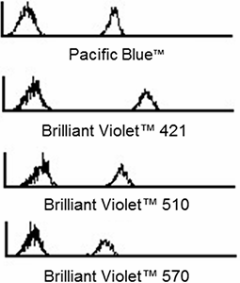
-

Veri-Cells™ PBMC were stained with anti-human CD4 (clone RPA-T4) in each fluorophore conjugate separately. -

Veri-Cells™ PBMC were stained with anti-human CD4 (clone RPA-T4) in each fluorophore conjugate separately. -

Veri-Cells™ PBMC were stained with anti-human CD4 (clone RPA-T4) in each fluorophore conjugate separately. -

Veri-Cells™ PBMC were stained with anti-human CD4 (clone RPA-T4) in each fluorophore conjugate separately.
| Cat # | Size | Price | Quantity Check Availability | Save | ||
|---|---|---|---|---|---|---|
| 300562 | 1 kit | £722 | ||||
The CD4 Fluorophore Sampler Kit contains 18 different fluorophore formats of clone RPA-T4 with 10 tests of each antibody per vial. It can be useful to have the same clone in multiple fluorophore formats to enable instrument characterization and standardization. This kit also contains a vial of 25 tests of Veri-Cells™ PBMC.
CD4, also known as T4, is a 55 kD single-chain type I transmembrane glycoprotein expressed on most thymocytes, a subset of T cells, and monocytes/macrophages. CD4, a member of the Ig superfamily, recognizes antigens associated with MHC class II molecules, and participates in cell-cell interactions, thymic differentiation, and signal transduction. CD4 acts as a primary receptor for HIV, binding to HIV gp120. CD4 has also been shown to interact with IL-16.
Product Details
- Verified Reactivity
- Human
- Reported Reactivity
- Chimpanzee
- Antibody Type
- Monoclonal
- Host Species
- Mouse
- Formulation
-
Brilliant Violet™ conjugates: Phosphate-buffered solution, pH 7.2, containing 0.09% sodium azide and BSA (origin USA).
All other conjugates: Phosphate-buffered solution, pH 7.2, containing 0.09% sodium azide and 0.2% (w/v) BSA (origin USA). - Storage & Handling
- The kit should be stored undiluted between 2°C and 8°C, and protected from prolonged exposure to light. Do not freeze.
- Application
-
FC - Quality tested
- Recommended Usage
-
Each lot of this antibody is quality control tested by immunofluorescent staining with flow cytometric analysis. For flow cytometric staining, the suggested use of this reagent is 5 µl per million cells or 5 µl per 100 µl of whole blood. It is recommended that the reagent be titrated for optimal performance for each application.
Alexa Fluor® and Pacific Blue™ are trademarks of Life Technologies Corporation.
View full statement regarding label licenses
Brilliant Violet 421™, Brilliant Violet 510™, Brilliant Violet 570™, Brilliant Violet 605™, Brilliant Violet 650™, Brilliant Violet 711™, Brilliant Violet 785™ are trademarks of Sirigen Group Ltd.
Learn more about Brilliant Violet™.
This product is subject to proprietary rights of Sirigen Inc. and is made and sold under license from Sirigen Inc. The purchase of this product conveys to the buyer a non-transferable right to use the purchased product for research purposes only. This product may not be resold or incorporated in any manner into another product for resale. Any use for therapeutics or diagnostics is strictly prohibited. This product is covered by U.S. Patent(s), pending patent applications and foreign equivalents. - Excitation Laser
-
Violet Laser (405 nm)
Blue Laser (488 nm)
Green Laser (532 nm)/Yellow-Green Laser (561 nm)
Red Laser (633 nm)
- Application Notes
-
The RPA-T4 antibody binds to the D1 domain of CD4 (CDR1 and CDR3 epitopes) and can block HIV gp120 binding and inhibit syncytia formation. Additional reported applications (for the relevant formats) include: immunohistochemistry of acetone-fixed frozen sections3,4,5, and blocking of T cell activation1,2. This clone was tested in-house and does not work on formalin fixed paraffin-embedded (FFPE) tissue. The LEAF™ purified antibody (Endotoxin <0.1 EU/µg, Azide-Free, 0.2 µm filtered) is recommended for functional assays (Cat. No. 300516).
-
Application References
(PubMed link indicates BioLegend citation) -
- Knapp W, et al. 1989. Leucocyte Typing IV. Oxford University Press. New York. (Activ)
- Moir S, et al. 1999. J. Virol. 73:7972. (Activ)
- Deng MC, et al. 1995. Circulation 91:1647. (IHC)
- Friedman T, et al. 1999. J. Immunol. 162:5256. (IHC)
- Mack CL, et al. 2004. Pediatr. Res. 56:79. (IHC)
- Lan RY, et al. 2006. Hepatology 43:729.
- Zenaro E, et al. 2009. J. Leukoc. Biol. 86:1393. (FC) PubMed
- Yoshino N, et al. 2000. Exp. Anim. (Tokyo) 49:97. (FC)
Antigen Details
- Cell Type
- Dendritic cells, Tregs
- Biology Area
- Immunology
- Molecular Family
- CD Molecules
- Gene ID
- 920 View all products for this Gene ID
- UniProt
- View information about CD4 on UniProt.org
Related FAQs
- Is washing required after staining?
-
Yes, it is recommended to wash after staining. We recommend using BioLegend's Cell Staining buffer (Cat. No. 420201) for the wash step.
- I am unable to see expression of T cell markers such as CD3 and CD4 post activation.
- TCR-CD3 complexes on the T-lymphocyte surface are rapidly downregulated upon activation with peptide-MHC complex, superantigen or cross-linking with anti-TCR or anti-CD3 antibodies. PMA/Ionomycin treatment has been shown to downregulate surface CD4 expression. Receptor downregulation is a common biological phenomenon and so make sure that your stimulation treatment is not causing it in your sample type.
- Can the cells be activated after rehydration?
- No, they cannot be activated.
- Are these cells virus/pathogen free?
- These are tested to be free of HIV, HBV, syphilis, and HCV.
- Are there any RBCs in Veri-cells™?
- There may be a few, but the majority of RBCs are not present in Veri-Cells™ preparations.
- Are these cells viable?
- No they are not.
- Can a constant percentage of each population be expected in each lot?
- Yes, within each lot, cell populations remain constant.
- Are the cells fixed?
-
They are treated with our proprietary mixture prior to lyophilization.
- Can they be used to detect intracellular cytokines such as TNF-α or IFN-γ?
-
For this, use Veri-Cells™ Activated (Cytokine) PBMC which have been activated with Cell Activation Cocktail (with Brefeldin A) containing PMA and Ionomycin. These have been validated to stain positive for activation-induced cytokines including TNF-α and IFN-γ. Veri-Cells™ PBMC and Veri-Cells™ CD4-Low PBMC will not have detectable TNF-α or IFN-γ.
- How do we QC these cells?
-
Each Veri-Cells™ product is tested with a panel of antibodies to ensure expression of these markers falls within the expected range. For more information regarding the exact markers used for each product, please contact technical service.
Other Formats
View All CD4 Reagents Request Custom ConjugationCompare Data Across All Formats
This data display is provided for general comparisons between formats.
Your actual data may vary due to variations in samples, target cells, instruments and their settings, staining conditions, and other factors.
If you need assistance with selecting the best format contact our expert technical support team.
-
APC anti-human CD4
-
Biotin anti-human CD4
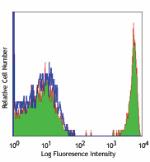
Human peripheral blood lymphocytes stained with biotinylated... -
FITC anti-human CD4
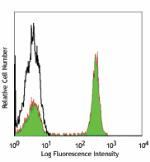
Human peripheral blood lymphocytes stained with RPA-T4 FITC 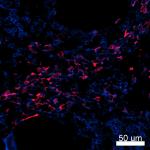
Confocal image of human lymph node sample acquired using the... -
PE anti-human CD4
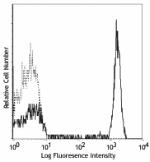
Human peripheral blood lymphocytes stained with RPA-T4 PE 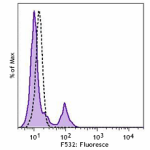
Human peripheral blood was stained with CD4 (clone RPA-T4) P... -
PE/Cyanine5 anti-human CD4
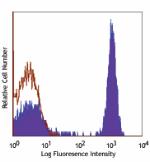
Human peripheral blood lymphocytes stained with RPA-T4 PE/Cy... -
PE/Cyanine7 anti-human CD4
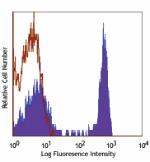
Human peripheral blood lymphocytes stained with RPA-T4 PE/Cy... -
Purified anti-human CD4
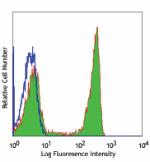
Human peripheral blood lymphocytes stained with purified RPA... -
APC/Cyanine7 anti-human CD4

Human peripheral blood lymphocytes were stained with CD4 (cl... -
Alexa Fluor® 488 anti-human CD4
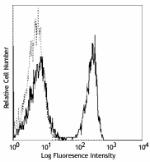
Human peripheral blood lymphocytes stained with RPA-T4 Alexa... 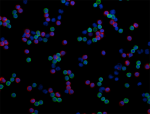
Human peripheral blood mononuclear cells were fixed with 2% ... 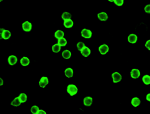
Human peripheral blood mononuclear cells were fixed with 1% ... -
Alexa Fluor® 647 anti-human CD4
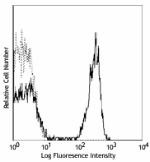
Human peripheral blood lymphocytes stained with RPA-T4 Alexa... 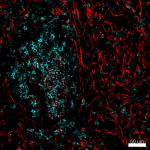
Confocal image of human spleen sample acquired using the IBE... 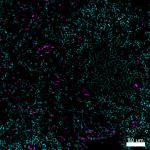
Confocal image of human lymph node sample acquired using the... -
Pacific Blue™ anti-human CD4

Human peripheral blood lymphocytes stained with RPA-T4 Pacif... -
Brilliant Violet 421™ anti-human CD4
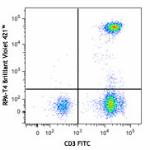
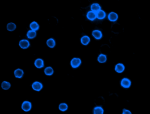
Human peripheral mononuclear cells were fixed with 1% Parafo... 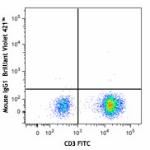
Human peripheral blood lymphocytes were stained with CD3 FIT... -
Alexa Fluor® 700 anti-human CD4
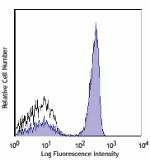
Human peripheral blood lymphocytes stained with RPA-T4 Alexa... 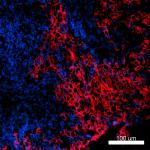
Confocal image of human metastatic lymph node sample acquire... -
PerCP anti-human CD4
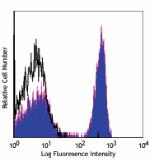
Human peripheral blood lymphocytes stained with RPA-T4 PerCP -
PerCP/Cyanine5.5 anti-human CD4
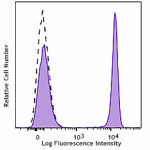
Human peripheral blood lymphocytes were stained with CD4 (cl... -
Brilliant Violet 570™ anti-human CD4
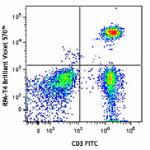
Human peripheral blood lymphocytes were stained with CD3 FIT... 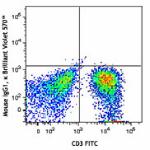
-
Brilliant Violet 650™ anti-human CD4
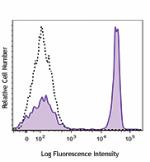
Human peripheral blood lymphocytes were stained with CD4 (cl... -
Purified anti-human CD4 (Maxpar® Ready)
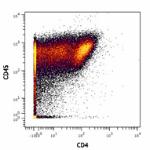
Human PBMCs stained with 154Sm-anti-CD45 (HI30) and 145Nd-an... -
Alexa Fluor® 594 anti-human CD4
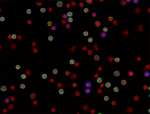
Human peripheral blood mononuclear cells were fixed with 2% ... 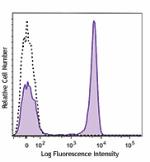
Human peripheral blood lymphocytes were stained with CD4 (cl... -
Brilliant Violet 510™ anti-human CD4
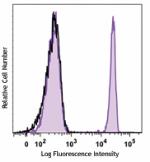
Human peripheral blood lymphocytes were stained with CD4 (cl... -
PE/Dazzle™ 594 anti-human CD4
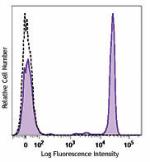
Human peripheral blood lymphocytes were stained with CD4 (cl... -
Brilliant Violet 785™ anti-human CD4
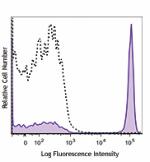
Human peripheral blood lymphocytes were stained with CD4 (cl... -
Brilliant Violet 605™ anti-human CD4
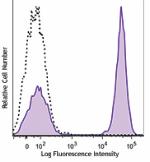
Human peripheral blood lymphocytes were stained with CD4 (cl... -
Brilliant Violet 711™ anti-human CD4
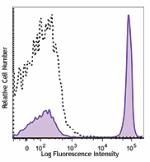
Human peripheral blood lymphocytes were stained with CD4 (cl... -
APC/Fire™ 750 anti-human CD4
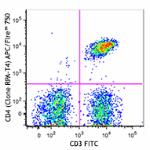
Human peripheral blood lymphocytes were stained with CD3 FIT... 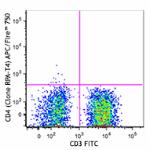
-
CD4 Fluorophore Sampler Kit
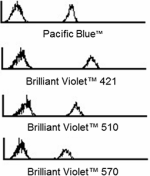
Veri-Cells™ PBMC were stained with anti-human CD4 (clone RPA... 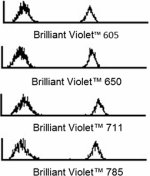
Veri-Cells™ PBMC were stained with anti-human CD4 (clone RPA... 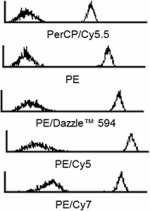
Veri-Cells™ PBMC were stained with anti-human CD4 (clone RPA... 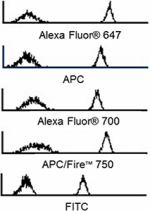
Veri-Cells™ PBMC were stained with anti-human CD4 (clone RPA... -
CD4 Fluorophore Sampler Kit with Veri-Cells™ PBMC

Veri-Cells™ PBMC were stained with anti-human CD4 (clone RPA... 
Veri-Cells™ PBMC were stained with anti-human CD4 (clone RPA... 
Veri-Cells™ PBMC were stained with anti-human CD4 (clone RPA... 
Veri-Cells™ PBMC were stained with anti-human CD4 (clone RPA... -
TotalSeq™-A0072 anti-human CD4
-
TotalSeq™-B0072 anti-human CD4
-
TotalSeq™-C0072 anti-human CD4
-
Ultra-LEAF™ Purified anti-human CD4
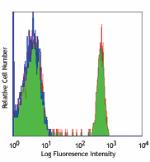
Human peripheral blood lymphocytes stained with LEAF™ purifi... -
TotalSeq™-D0072 anti-human CD4
 Login / Register
Login / Register 












Follow Us